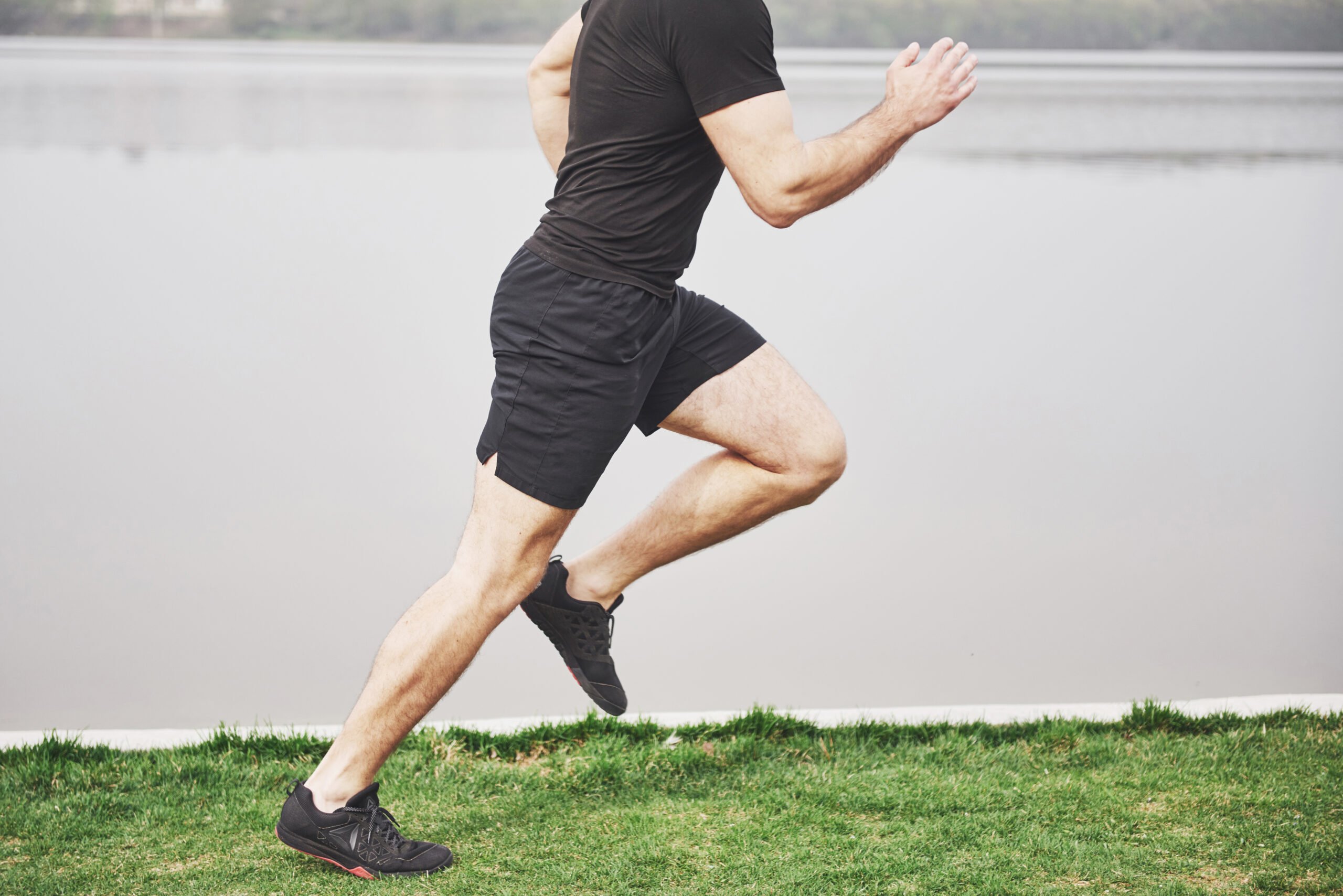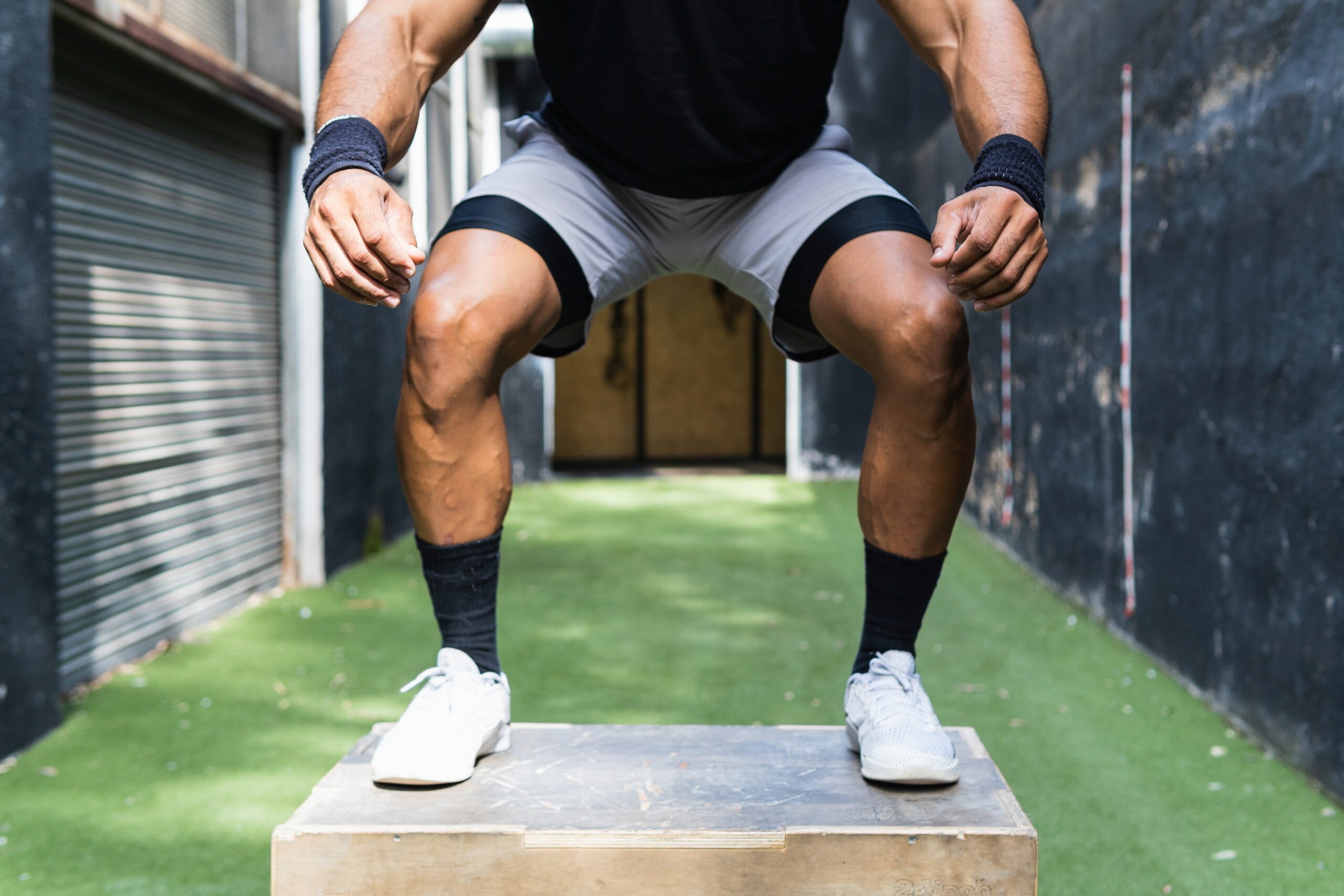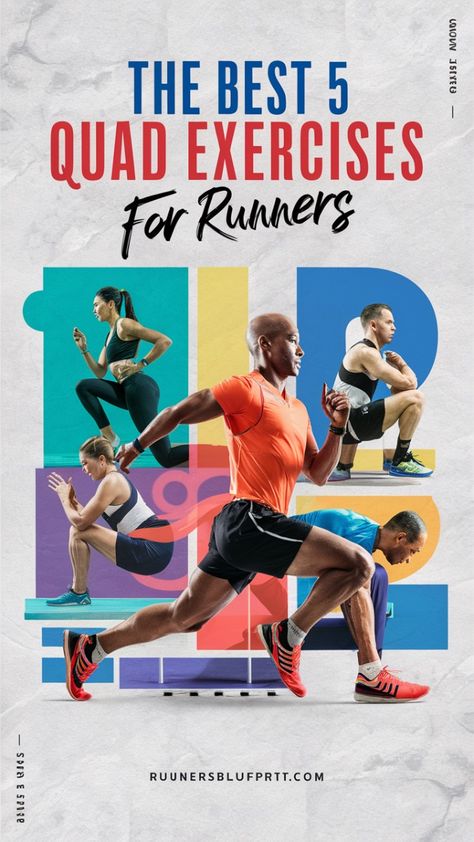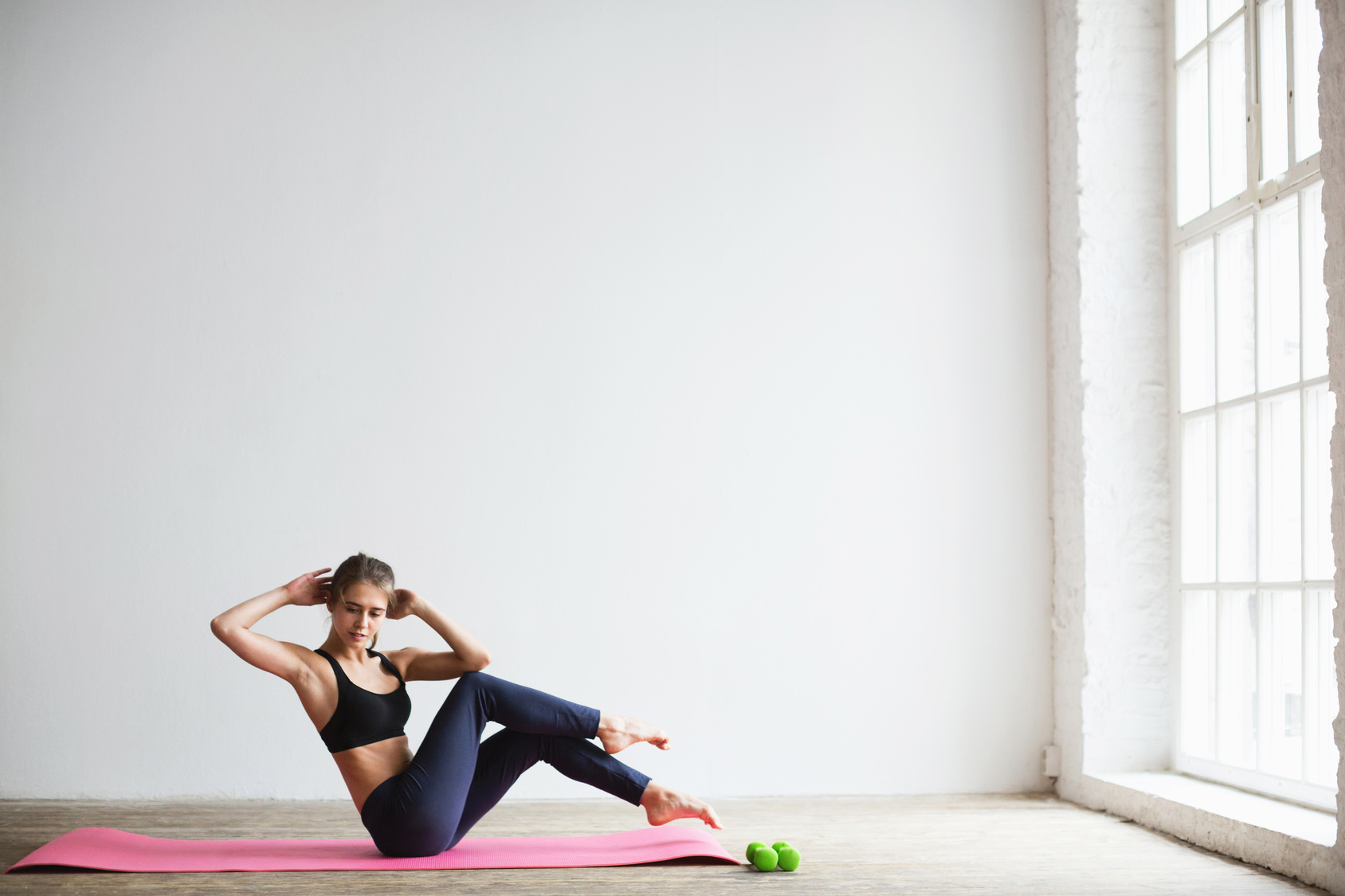Looking for the ultimate HIIT running workout routines? Well, strap on your running shoes and get ready for a wild ride because you’ve stumbled upon the holy grail of high-intensity training.
And let me tell you, my friend, I am obsessed with running. Like, seriously obsessed. It’s been my passion for the past decade, and let me tell you, it hasn’t always been smooth sailing.
I’ll be real with you. I’ve made my fair share of mistakes along the way. I mean, who hasn’t? I’m not perfect, and neither are you. But here’s the thing: we learn from those mistakes and we grow stronger because of them. One mistake that stands out vividly in my memory is when I neglected the power of high-intensity interval training (HIIT).
For the first three years of my running journey, I was pounding the pavement tirelessly, thinking that sheer mileage would magically improve my performance. Boy, was I wrong. Not only did my progress come to a screeching halt, but I also found myself nursing a slew of frustrating injuries. And let’s not forget the unwanted weight gain from my repetitive running routine. It was a vicious cycle, my friend.
But then, everything changed when I incorporated HIIT into my training regimen. Let me tell you, it was a game-changer. Within just a few weeks, I started noticing incredible improvements, not only in my running abilities but also in my overall strength and athleticism. It was like unlocking a secret door to a whole new level of fitness.
And guess what? I don’t want you to go through the same struggles I did. That’s why today, I’m here to introduce you to the magic of HIIT training. Now, don’t worry, I won’t drown you in a sea of boring theories and scientific jargon. Nope, we’re going to keep it fun, practical, and actionable.
In this post, I’ll not only share some of the most effective running-specific HIIT routines but also throw in a few non-running workouts that will leave you breathless and begging for more. Trust me, it’s going to be epic.
Ready? Let’s do this!-
HIIT For Runners Defined
So, what the heck is HIIT, you ask? Well, let me break it down for you.
High-intensity interval training is like a thrilling roller coaster ride for your body. It’s all about pushing yourself to the limit through a strategic blend of intense anaerobic intervals and low-intensity aerobic activity.
Picture this: you go all out for 20 to 60 seconds, giving it everything you’ve got, and then you catch your breath during a brief period of rest or lighter activity. And guess what? You repeat this cycle for a total of 15 to 30 minutes of pure fitness bliss.
But what sets HIIT apart from the monotonous, never-ending treadmill sessions or steady-state cardio that most people dread?
Well, it’s all about the intensity. HIIT takes your workout to a whole new level by challenging your body to reach its maximum output capacity, boosting your VO2 max in the process. It’s like revving the engine of a high-performance sports car. You go full throttle, reach your peak heart rate, and then strategically recover before diving back into the action.
Now, let me share the secret sauce to maximizing your HIIT experience. Enter intensity. When those high-burst intervals come knocking, give it your all. Push yourself to the absolute limit and feel your heart racing, your muscles burning, and the sweat pouring down. Embrace the discomfort because that’s where the magic happens.
But remember that it’s crucial to allow yourself proper rest and recovery during the designated periods. It’s like catching your breath at the top of the roller coaster before plunging into the next exhilarating loop.
A Formula for Success
Still confused?
Here’s how to proceed:
- Start with a warm-up. Check this routine.
- First interval: exercise at maximum power for 30 to 60 seconds.
- Recover for 20 to 60 seconds (or longer, depending on the workout).
- Repeat step (2) and (3) seven to ten times.
- Cooldown. Check my routine here.
The Benefits of HIIT For Runners
High intensity interval training has a lot to offer, including:
Reduces Body Fat
Let me blow your mind with some fascinating research. There’s an Australian study that’ll make you think twice about your fat-burning strategy.
In this study, they pitted the high-intensity interval training (HIIT) group against the steady-state cardio group. And guess what? The results were mind-boggling. The HIIT group, following a mere 20-minute routine, managed to shed a whopping six times more body fat than their steady-state counterparts. Yes, you heard that right—six times more fat melted away in those who embraced the intensity of HIIT.
Now, what’s the takeaway from this remarkable study? It’s simple, my friend. When it comes to burning fat, it’s all about going hard and going short. Forget those long, tedious hours spent on the treadmill or elliptical machine. HIIT is here to save the day and kick fat to the curb.
And you know what I love most about it? It demolishes the age-old excuse of “I don’t have time for exercise.” Say goodbye to those time-consuming workouts because HIIT gets the job done in a fraction of the time.
I remember when I first ventured into the world of HIIT. I must admit, I was skeptical. How could a shorter workout make such a significant impact on the scale? But let me tell you, my friend, it was a game-changer.
Boost Metabolism
Thanks to a phenomenon called excess post-exercise oxygen consumption (EPOC), your body continues to torch calories even while you kick back and relax. It’s like getting a bonus boost to your metabolism!
And guess what? A study conducted by the brilliant minds at East Tennessee State University discovered that HIIT workouts can keep your metabolism revved up for hours, burning as much as an extra 100 calories post-training.
Now, you might be thinking, “100 calories? That doesn’t sound like much.” But my friend, those calories can add up over time, giving you an extra edge in your weight loss journey.
Build Muscle
But wait, there’s more! HIIT doesn’t just help you shed fat; it also helps you build muscle. You might be wondering, “But isn’t muscle building reserved for those heavy lifting sessions?” Well, think again.
A groundbreaking study published in the Journal of The International Society of Sports Nutrition revealed something fascinating. Even in the absence of traditional strength training, HIIT has the power to sculpt those muscles you’ve always dreamed of. It’s like a magical two-in-one combo—shedding fat while gaining lean muscle mass. How does it work?
HIIT creates an anabolic effect in your body, promoting muscle growth. And here’s the cherry on top: it skyrockets the production of human growth post-training, making your muscles say, “Hello gains, nice!”
Cutting the Junk Is the Big Promise
Researchers at McMaster University in Hamilton, Ontario cracked the code and discovered that HIIT is like a superhero for your fitness, capable of achieving in 2.5 hours what would take a whopping 10.5 hours of traditional endurance training.
You lace up your running shoes and hit the pavement for an interval run. You push your limits for short bursts of intense effort, followed by brief periods of active recovery. The result?
A fitness miracle that’s four times more effective than your standard cardio routine. It’s like discovering a hidden shortcut to your fitness goals, leaving those monotonous long runs in the dust.
I’ve personally experienced this transformation, and let me tell you, it’s nothing short of amazing.
By incorporating plenty of interval workouts while reducing my weekly mileage, I’ve not only become a faster runner but also managed to keep those pesky injuries at bay.
You Can Do It Anywhere
Now here’s the best part: high-intensity interval workouts can be done anywhere, anytime. They’re the chameleons of fitness, adapting to any environment and equipment you have available.q
Whether you prefer interval runs that make your heart pound like a tribal drum or fartlek runs that keep you on your toes, there’s a world of options at your disposal. And let’s not forget about the power of bodyweight exercises, dumbbells, kettlebells, jump ropes, weights, or even a trusty sandbag.
The possibilities are endless, and you can turn any space into your personal fitness playground.
The Dangers of HIIT For Runners
Listen up, my fellow fitness enthusiasts, because we’re about to dive into the nitty-gritty of HIIT and uncover the potential pitfalls that lie beneath its shiny surface.
Yes, it’s time to shed some light on the not-so-sunny side of this revolutionary training method. While HIIT has the power to transform your fitness journey, you must tread carefully and consider a few important factors before jumping headfirst into the high-intensity abyss.
Now, let’s get real for a moment. HIIT is a force to be reckoned with, pushing your body to its limits and demanding the utmost from your cardiovascular system. But that also means it’s not suitable for everyone, especially those who find themselves in a delicate state of injury recovery, dealing with cardiovascular or circulatory issues, or simply starting from square one on their fitness journey. In these cases, it’s crucial to prioritize your health and well-being above all else.
Here’s the deal: I’m not a doctor, but I strongly urge you to consult with a healthcare professional who can assess your current condition and guide you towards the best workout options for your specific needs. They have the knowledge and expertise to give you personalized advice that takes into account your unique circumstances.
Remember, your health is priceless. Taking a step back and ensuring you’re in the right physical condition to tackle the challenges of HIIT is a wise move. Think of it as protecting your investment. Just like a car needs regular maintenance to perform at its peak, your body deserves the same care and attention. So, don’t be shy about seeking professional advice. It’s better to be safe than sorry.
How to Start HIIT Workouts For runners
Alright, my eager friend, now that you’ve received the green light from your doctor and you’re ready to take on the exhilarating world of HIIT, it’s time to lay down the foundation for success. I want you to dive into this training method with confidence, avoiding any unnecessary risks or setbacks.
Think of these benchmarks as stepping stones that will guide you towards a smooth and injury-free HIIT experience. They serve as a testament to your commitment and readiness to take on the challenges that lie ahead.
Without further ado, let’s dive into the three key benchmarks that will set you up for HIIT success.
First up, we have the habit of running regularly for the past three to four months. Consistency is key here. It’s all about building a strong foundation of cardiovascular endurance and getting those legs accustomed to the rhythm of the run. Lace up those shoes, hit the pavement, and make running a part of your lifestyle.
But we don’t stop there. It’s time to level up your running game. The second benchmark calls for consistently challenging yourself during your runs, pushing your effort level to a solid 70 to 80 percent. I’m talking about stepping outside your comfort zone, embracing that burn in your muscles, and breaking through any self-imposed limitations. This is where the magic happens.
Now, onto the third benchmark—the weekly long run. Picture this: you’re out there, pounding the pavement, one foot in front of the other, for a solid hour or more. It’s a test of mental and physical endurance, a chance to tap into your inner grit and discover what you’re truly capable of. This long run builds resilience and prepares your body for the challenges that await during HIIT workouts.
If you’ve checked off these three benchmarks and you’re feeling like a running rockstar, then congratulations! You’ve laid a solid foundation for the introduction of HIIT into your training routine. You’ve shown dedication, discipline, and a burning desire to take your fitness to the next level. But hold on, if you’re just starting out on your running journey or haven’t quite met these benchmarks yet, don’t worry.
If you find yourself in this position, my advice to you is simple: invest a few months into building up your stamina. Follow a well-rounded running program that gradually increases your mileage and endurance.
Top 15 HIIT Running Workout Routines
Here are 15 HIIT variations to help you get into the best shape of your life.
Pick one or two workouts to add to your weekly program.
Make sure you incorporate at least one day of rest between each workout.
HIIT Running Workout # 1 – Sprints
Before you dive into the heart-pounding action, let’s not forget the importance of a proper warm-up. Think of it as preparing your body for the exhilarating race ahead. Engage in dynamic stretches, loosen those muscles, and get that blood pumping. A warm-up primes your body for the intensity that awaits, helping you perform at your best and reducing the risk of injury.
Now, let’s talk about sprint distances. Choose a distance that suits your fitness level and pushes you just beyond your comfort zone. It’s like selecting the perfect gear for a thrilling race. Whether it’s a 100-meter dash or a longer sprint, find the sweet spot that challenges you without overwhelming you.
As you gear up for your first sprint interval, give it everything you’ve got. Go all out at 80 percent of your maximum effort. Feel your muscles engage, your heart pounding, and the wind rushing past you.
After each sprint, take a well-deserved breather. Recovery is crucial to catch your breath and prepare for the next explosive burst of energy. Take between 30 seconds and one minute to recover, allowing your heart rate to settle and your body to replenish its energy stores.
Repeat this exhilarating process of sprinting and recovery six to eight times. Feel the rush of adrenaline with each interval, pushing yourself beyond your limits and unlocking new levels of strength and endurance. Embrace the challenge, and remember, it’s in these intense moments that growth happens.
As you approach the finish line of your workout, it’s time to cool down. Just like a victorious athlete savors their triumph, take five minutes to gradually decrease your pace and let your body ease into a state of relaxation.
HIIT Running Workout # 2 – Hill Sprints
Get ready to take your sprinting game to new heights with an electrifying twist – hill sprints! If you’ve mastered sprinting on flat ground, it’s time to conquer the majestic slopes and unleash your lower body speed and strength.
Now, it’s time to seek out the perfect hill for your sprinting adventure. Find a steep slope that stretches between 100 to 300 feet in length. It’s like scouting for the ultimate conquerable peak, where your efforts will be rewarded with incredible speed and strength gains.
As you embark on your hill sprint session, visualize yourself as an unstoppable force, conquering the incline with every powerful stride. Feel the burn in your quads, the surge of energy in your calves, and the wind whipping through your hair. Embrace the challenge, knowing that with each step, you’re building a stronger and faster version of yourself.
Once you reach the top of the hill, take a moment to catch your breath and enjoy the victorious view. It’s a triumphant pause in your ascent, a well-deserved reward for conquering the uphill battle. But don’t rest for too long, my friend, as you’ll need to make your way back down the hill for your recovery phase. Let gravity be your guide as you jog back down, allowing your body to recover and prepare for the next thrilling ascent.
Repeat this invigorating cycle of sprinting uphill and jogging back down five to eight times. Each repetition is like conquering a mini mountain, pushing your limits and elevating your performance to new heights. Embrace the burn in your muscles and the rapid beat of your heart, for it is in these challenging moments that true strength is forged.
HIIT Running Workout # 3 – The Bodyweight Routine
Picture yourself harnessing the might of your muscles, sculpting your body, and pushing yourself to new limits. Get ready for a bodyweight routine that will ignite your progress and lay the foundation for future challenges.
As a fan of bodyweight exercises, I can’t stress enough their benefits. They’re like the Swiss Army knives of the fitness world—convenient, versatile, and accessible to all. Whether you’re a beginner or a seasoned fitness enthusiast, bodyweight exercises offer a pathway to success, as long as you prioritize proper form and stay within your fitness level. It’s all about building a solid foundation to support your fitness journey.
Now, let’s dive into a beginner-friendly routine that will set you on the path to total body strength and endurance. By incorporating these exercises regularly, you’ll lay the groundwork for even more demanding workouts in the future. So, grab your enthusiasm, put on your workout gear, and let’s conquer this bodyweight routine together!
For each exercise, aim to complete five sets of ten-to-fifteen reps. Remember, it’s not just about the quantity, but also the quality of each repetition. Focus on maintaining proper form, engaging the target muscles, and challenging yourself without compromising safety.
First up, pull-ups, the ultimate test of upper body strength. Picture yourself hanging from a sturdy bar, channeling your inner warrior as you lift your bodyweight with sheer determination. This exercise targets your back, shoulders, and arms, building strength and definition in those upper body muscles.
Next, let’s embrace the power of air squats. Stand tall, feet shoulder-width apart, and sink into a squat position as if you’re preparing to sit on an imaginary chair. Feel the burn in your quadriceps and glutes as you rise back up, like a phoenix rising from the ashes. Air squats are fantastic for strengthening your lower body and enhancing your overall stability.
Prepare to take a dip into the world of dips! Find parallel bars or sturdy surfaces to support your body as you lower yourself down and push back up. This exercise targets your triceps, chest, and shoulders, sculpting those upper body muscles and improving your pushing strength. Embrace the challenge, and watch your body transform.
Now, let’s shift our focus to the classic pushup. Get into a high plank position, hands shoulder-width apart, and lower your chest towards the ground before pushing back up with controlled power. Feel your chest, shoulders, and triceps engage as you conquer each repetition. Pushups are like the bread and butter of bodyweight exercises, delivering a well-rounded upper body workout.
Last but not least, forward lunges, a move that activates your lower body and challenges your balance. Step forward with one leg, lower your body until both knees are bent at a 90-degree angle, and push through your heel to return to the starting position.
Alternate legs with each repetition, and feel the burn in your quadriceps and glutes as you stride towards greater strength.
HIIT Running Workout # 4 – Tabata Protocol
Get ready to experience a heart-pumping, calorie-blasting, and exhilarating workout that will push your limits and leave you feeling invigorated. Introducing one of my all-time favorite HIIT workouts—the Tabata protocol.
This workout is like a burst of lightning, delivering intense intervals of effort followed by moments of recovery. It’s a high-intensity dance between pushing your limits and allowing your body to recharge.
Studies have shown that Tabata workouts, like the one we just conquered, have numerous benefits. Research papers have revealed that this form of high-intensity interval training can enhance cardiovascular fitness, improve anaerobic capacity, and even boost metabolism long after the workout is over.
For the Tabata intervals, you’ll be running at your fastest pace for 20 seconds—a sprint that will make your heart race, your lungs gasp for air, and your legs feel like they’re on fire. Channel your inner Usain Bolt as you explode forward, pushing your limits with every stride.
But don’t worry, after each 20-second burst of speed, you’ll have a moment to catch your breath and recover. It’s like a brief respite amidst the storm—a chance to regroup, refocus, and prepare for the next exhilarating round. Use those 10 seconds of recovery to jog slowly, allowing your heart rate to settle and your muscles to relax before the next sprint.
Now, let’s repeat this electrifying pattern eight times. Eight cycles of pushing your limits, followed by moments of respite. It’s a beautiful balance between exertion and recovery. With each repetition, you’ll feel your body growing stronger, your endurance soaring, and your spirit igniting with a sense of accomplishment.
HIIT Running Workout # 5 – Tabata Protocol – The Strength Version
Are you ready to take your fitness journey to the next level? Brace yourself for the ultimate challenge—Tabata bodyweight training. It’s time to put your strength, endurance, and mental fortitude to the test. But before we dive into this exhilarating workout, let’s talk about what makes it so unique and why you need to approach it with caution.
Tabata bodyweight training combines the best of both worlds: aerobic and anaerobic exercises.
It’s like a fusion of fire and air, blending the intensity of high-intensity intervals with the power of bodyweight movements. This workout will make you sweat, burn calories, and leave you feeling like a warrior who has conquered the battlefield of fitness.
However, a word of caution—Tabata bodyweight training is not for the faint of heart. It demands discipline, proper form, and a keen understanding of your fitness level. It’s important to listen to your body and know when to push yourself and when to take a step back. Remember, your safety and well-being should always be a top priority.
Here’s the workout routine:
- Do as many high knee sprints as you can in 20 seconds
- Rest for 10 seconds
- Do as many squats as you can in 20 seconds
- Rest for 10 seconds
- Do as many pushups as you can in 20 seconds
- Rest for 10 seconds
- Do as many burpees as you can in 20 seconds
- Rest for 10 seconds
- Do as many sit-ups as you can in 20 seconds
- Rest for 10 seconds
- Do as many squat jumps as you can in 20 seconds
Rest for one to two minutes.
Repeat the circuit two to three times.
Finish the session with a 10-minute cool-down.
You can also try this agility ladder workout.
HIIT For Runners Workout # 6 – HIIT Time Challenge
Looking for an extra edge with your training? Try the HIIT time challenge.
Start your session with a 10-minute warm-up of light jogging.
After that, spend 20 minutes doing as many rounds as possible (AMRAP) of:
- Ten military style pushups
- Ten hanging leg raises
- Ten jumping squats
- Ten burpees
- Ten pull-ups.
Record your result, then during your next session aim to beat your record.
HIIT For Runners Workout # 7 – Jump Rope Routine
I’m a big fan of jump rope workouts.
These burn mad calories, improve your foot speed, increase coordination, and boost agility.
What’s not to like?
Here’s how to proceed:
Start with a 5 minute forward jumping rope exercise at a comfortable pace as a warm-up.
Afterward, put the rope down and do a set of full-body dynamic stretches.
Next, perform the following exercises:
- One minute of forward jumps
- One minute of alternate foot jumps
- One minute of side-to-side jumps
- One minute of double unders
- One minute of high knee jumps
- One minute of one-foot hops
Rest for two to three minutes, then repeat the circuit two to three times.
HIIT For Runners Workout # 8 – Plyometric HIIT Workout
Also known as explosive training, plyometric training requires your muscles to make use of maximum force in minimum time.
When doing this workout, go explosive for 30 seconds, then recover for another 30 seconds, move to the next exercise, and repeat.
Rest for one to two minutes after completing the whole circuit, then repeat it two to three times.
For a greater challenge, consider holding dumbbells at your sides while doing the workout, or wear a weighted vest.
- Box Jumps
- Plyo push-up
- Jumping lunges
- 180-degree squat jump
- Burpees
HIIT For Runners Workout # 9 – The Ab Worker
I don’t believe in “spot reduction” exercises, but I’m pretty sure that HIIT training can tone your midsection.
It’s also a fun way to exercise your abs: HIIT style is much more enjoyable than doing crunches.
Here’s the workout.
Complete three sets of:
- 25 Russian twists (on each side)
- 20 Woodchoppers
- 25 Mountain climbers
- 20 Bicycle crunches
- 20 Hanging leg
HIIT For Runners Workout # 10 – Medicine-Ball HIIT Workout
Medicine balls are usually lightweight.
They’re designed for simple grip and maneuverability, and they’re also a powerful tool for HIIT styled workouts.
Med ball exercises target multiple muscle groups, boost coordination, increase endurance, and improve grip strength.
Complete three sets of eight to 15 reps of:
- Rock and roll up
- Medicine ball push-up
- V-up
- Woodchopper
- Wall toss.
HIIT For Runners Workout # 11 – Sleds Routine
Sled training is one of the most grueling workouts I’ve ever done.
The first time I ever tried it I truly thought I was going to die, but thanks to a training buddy that kept motivated, I was able to pull it through.
The premise is simple: push the sled from point A to point B as hard and fast as possible without sacrificing form.
That’s it!
If it’s your first time trying this workout, go light and slow.
Start out with a 35-pound slate or lighter.
Only after you’ve nailed proper form should you gradually add more weights and reps.
This I learned the hard way after my first go at sled workouts when I thought I was Superman, I couldn’t sit comfortably nor move my arms for two days!
Here’s how to proceed:
Load a sled on each side and push it for the desired distance.
Then rest for 30 seconds and repeat five to seven more times.
What’s good form? Keep a straight line from your head to your ankle and drive your feet diagonally into the ground with each step you take.
The power needed for the forward momentum must come from your hips and legs, not your arms.
HIIT For Runners Workout # 12 – “Fight Gone Bad” WOD
You cannot do HIIT workouts without throwing some CrossFit WODs (Workout of The Day) into the mix.
After all, CrossFit philosophy revolves around the principles of HIIT training.
I like the “Fight Gone Bad” WOD because it’s intense and will have you doing all sorts of plyo, resistance, and cardio exercises.
To do the “Fight Gone Bad” WOD, complete five rounds of:
- Wall-ball, 20-pound ball, 10 ft targets (Reps)
- Sumo deadlift high-pull, 75 pounds (Reps)
- Box Jump, 20″ box (Reps)
- Push-press, 75 pounds (Reps)
- Row (Calories)
HIIT For Runners Workout # 14 – Filthy Fifty CrossFit Workout
The filthy 50 is another brutal CrossFit workout loaded with rigorous exercises guaranteed to push you to your breaking point.
The circuit involves performing 50 reps of 10 different exercises, all done as quickly as possible.
The exercises are:
- 50 box jumps with a 24-inch box
- 50 jumping pull-ups
- 50 Kettlebell swings
- 50 walking lunge steps
- 50 knees to elbows
- 50 reps of push presses with 45 pounds
- 50 back extensions
- 50 wall balls using a 20-pound ball
- 50 burpees
- 50 double-unders.
Amazing, right? If you can pull this off in under 30 minutes, then you’re in remarkable condition!
HIIT For Runners Workout # 15 – Heavy Rope HIIT Workout
Rope training is the most recent addition to my training regimen, and goodness, it’s freaking tough!
Heavy rope exercises target every major muscle in the body and will push you to the breaking point if you’re not careful.
Here’s a workout routine to try:
Start with a 10 to 15 minutes dynamic warm-up, then perform the following battling rope exercises:
- One minute of rope waves
- One minute of shoulder press
- One minute of rope spirals
- One minute of side slams
- One minute of alternating wave lunge jump
- One minute of start jumps.
HIIT Running Workout Routines – The Conclusion
There you have it. The above HIIT running workout routines are some of the most efficient and powerful workouts you can ever do to improve your fitness and health.
Feel free to leave your comments and questions below, and as always, thanks for stopping by. Keep running strong!
David D.












